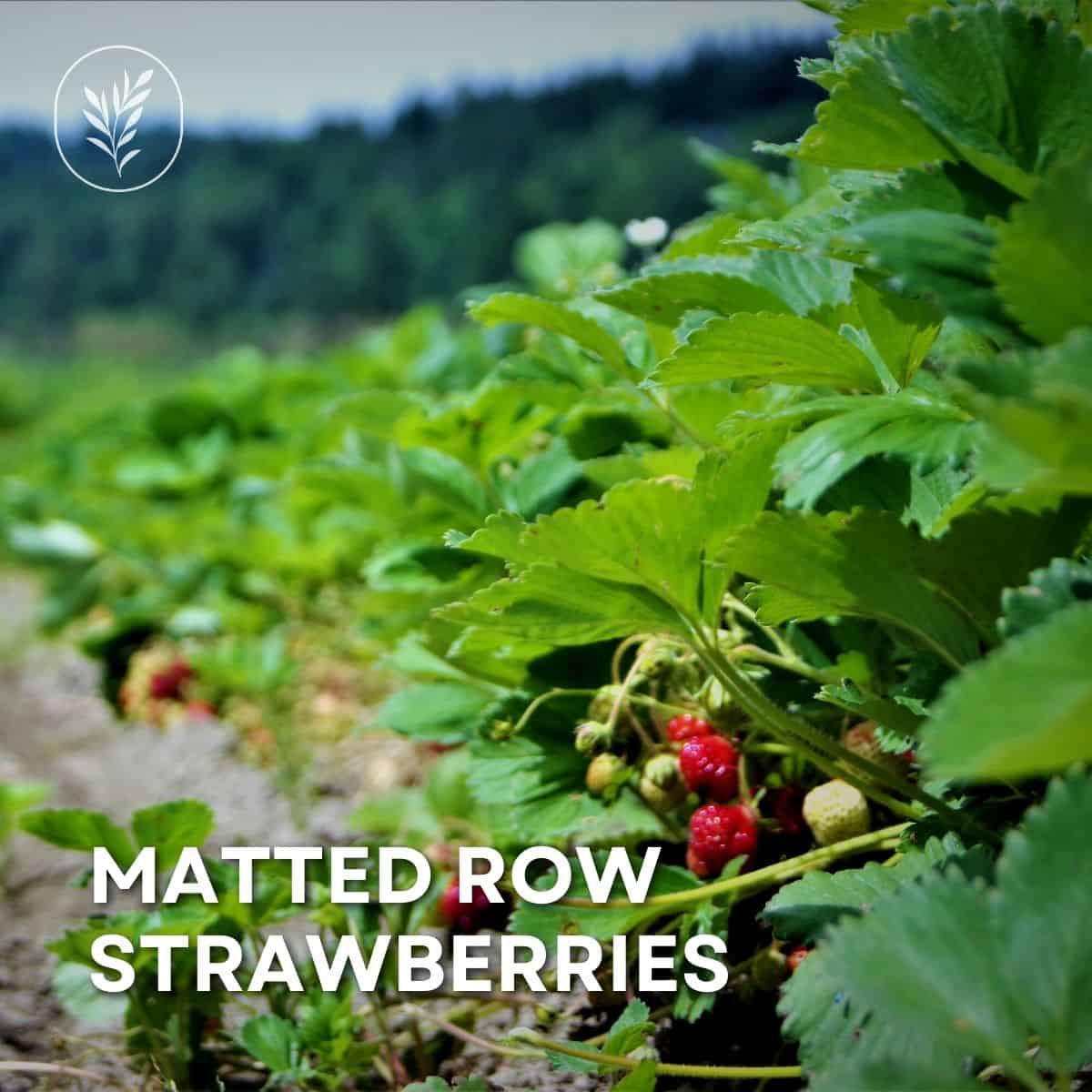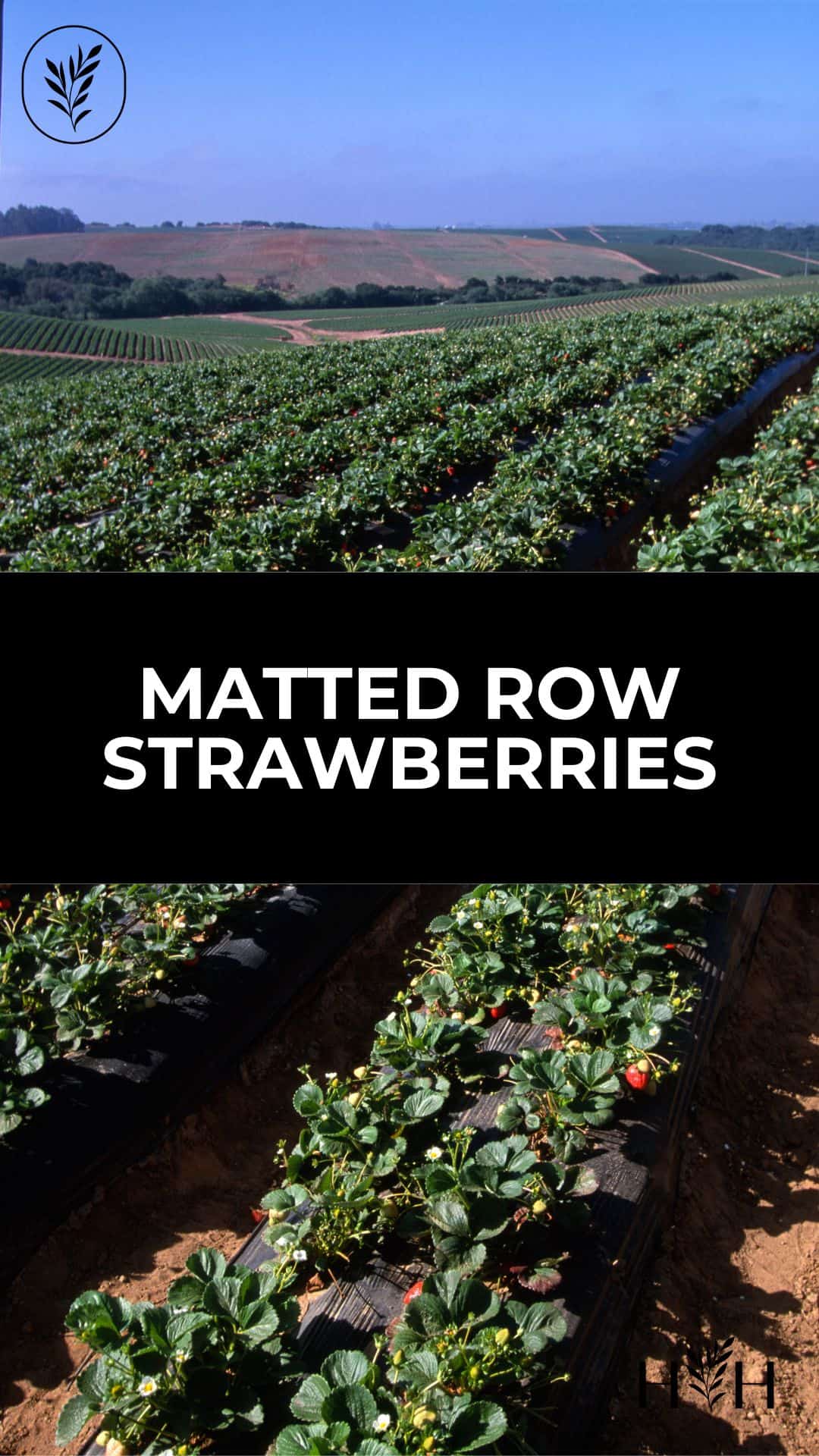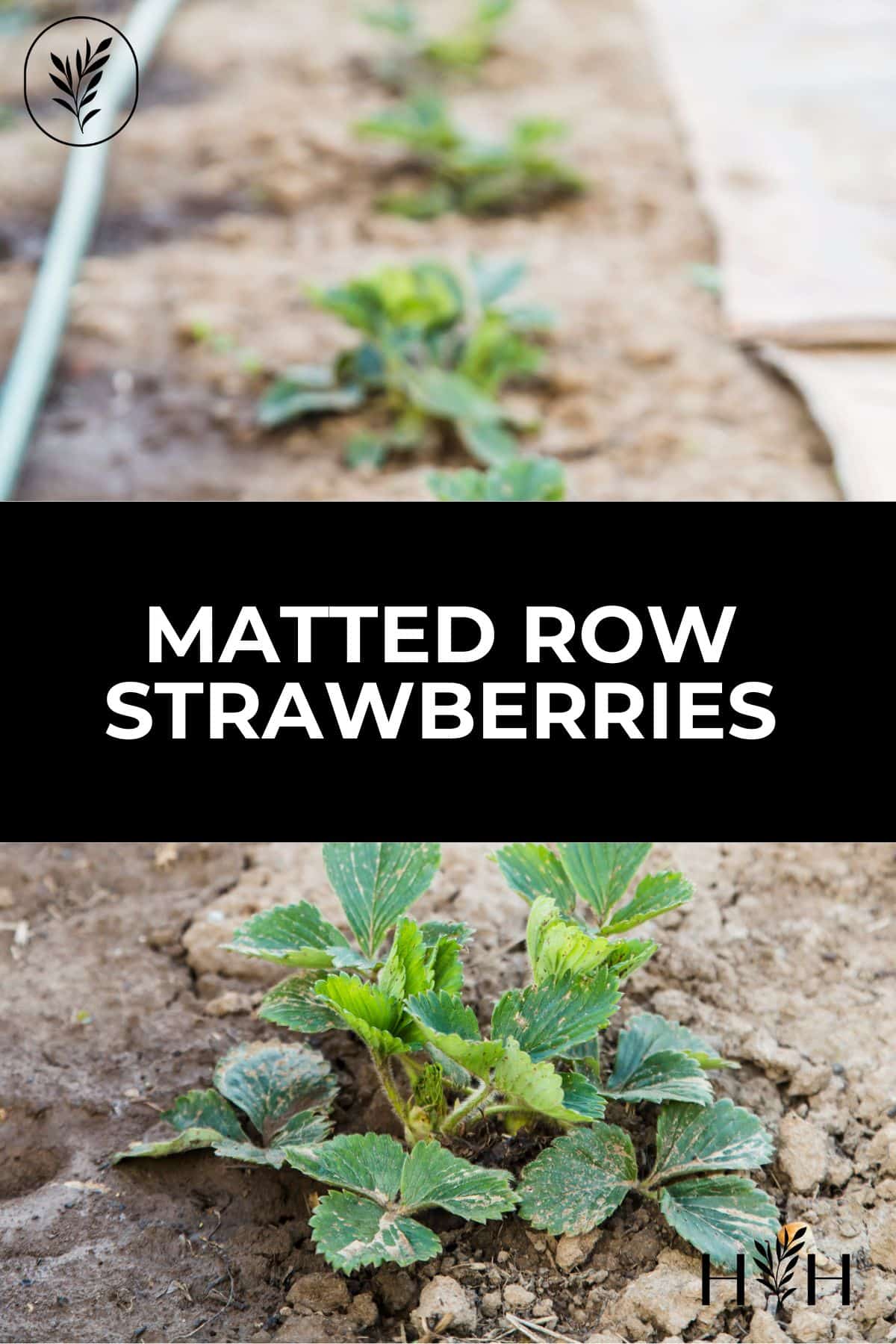Growing strawberries in matted rows is a great way to have an abundant harvest of juicy, sweet berries every year. This method works best for June-bearing cultivars. With proper care and maintenance, you can enjoy the fruits of your labor for years.
Planting strawberry plants in matted rows allows them to grow and spread without overcrowding each other. When it comes time for harvesting season, you’ll be rewarded with delicious fruit that will last all summer long. Watering correctly and controlling weeds are also important steps in successful matted row growing. Annual rejuvenation helps keep pests & diseases away so you don’t miss out on any of those yummy berries.
Introduction to growing matted row strawberries
Matted row strawberries are a great way to grow delicious, juicy June-bearing strawberries. This system is the preferred method for growing these types of berries because they send out lots of runners and can quickly establish themselves by filling in a given space. In contrast, varieties that don’t runner well are typically planted in hill system beds.
When planting strawberry plants in matted rows, you’ll want to set them 14 to 24 inches apart within the row and 36 to 48 inches between the rows’ center line. As the plants start producing runners, allow them to fill in the spaces until each row is 14 to 18 inches wide. Avoid wider rows than about 20″ as the inner plants may not produce as well. You can create narrower paths if you like, as long as they work for your harvesting method.
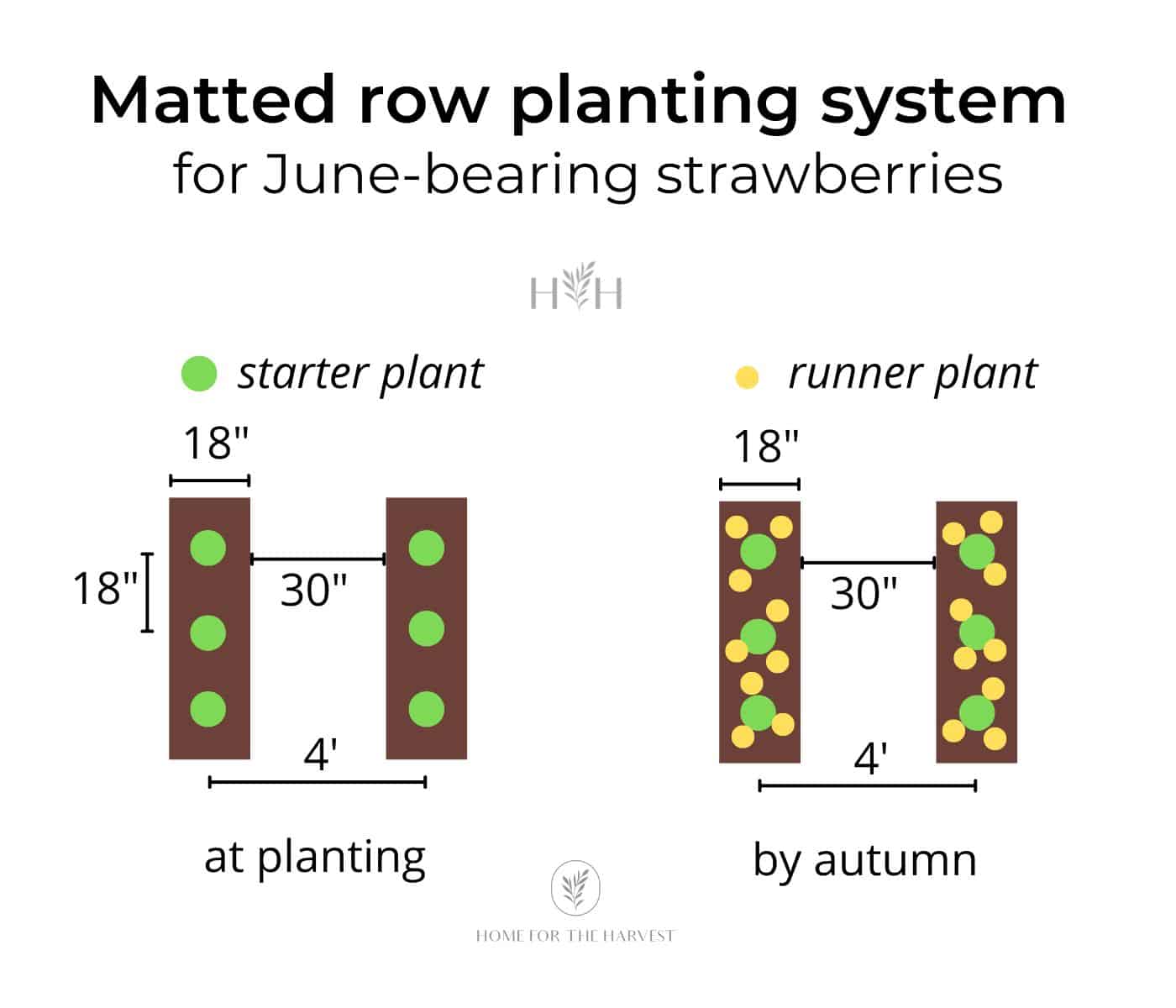
Watering your matted rows regularly will help ensure that your strawberry plants get enough moisture and nutrients throughout their growth cycle. Depending on weather conditions, you may need to water up three times per week during dry periods or when temperatures rise above 80 degrees Fahrenheit (27 Celsius). Make sure not to let your soil become soggy, as this can lead to root rot and other issues with your crop.
Controlling weeds around your matted rows is important if you want healthy strawberry plants and a good harvest come summertime. You can use mulch or landscape fabric around each plant bed so that weeds don’t take over; just make sure it’s spread evenly without blocking sunlight from reaching the roots of your strawberries. Additionally, hand weeding stray weeds that pop up should be done periodically throughout the season as well.
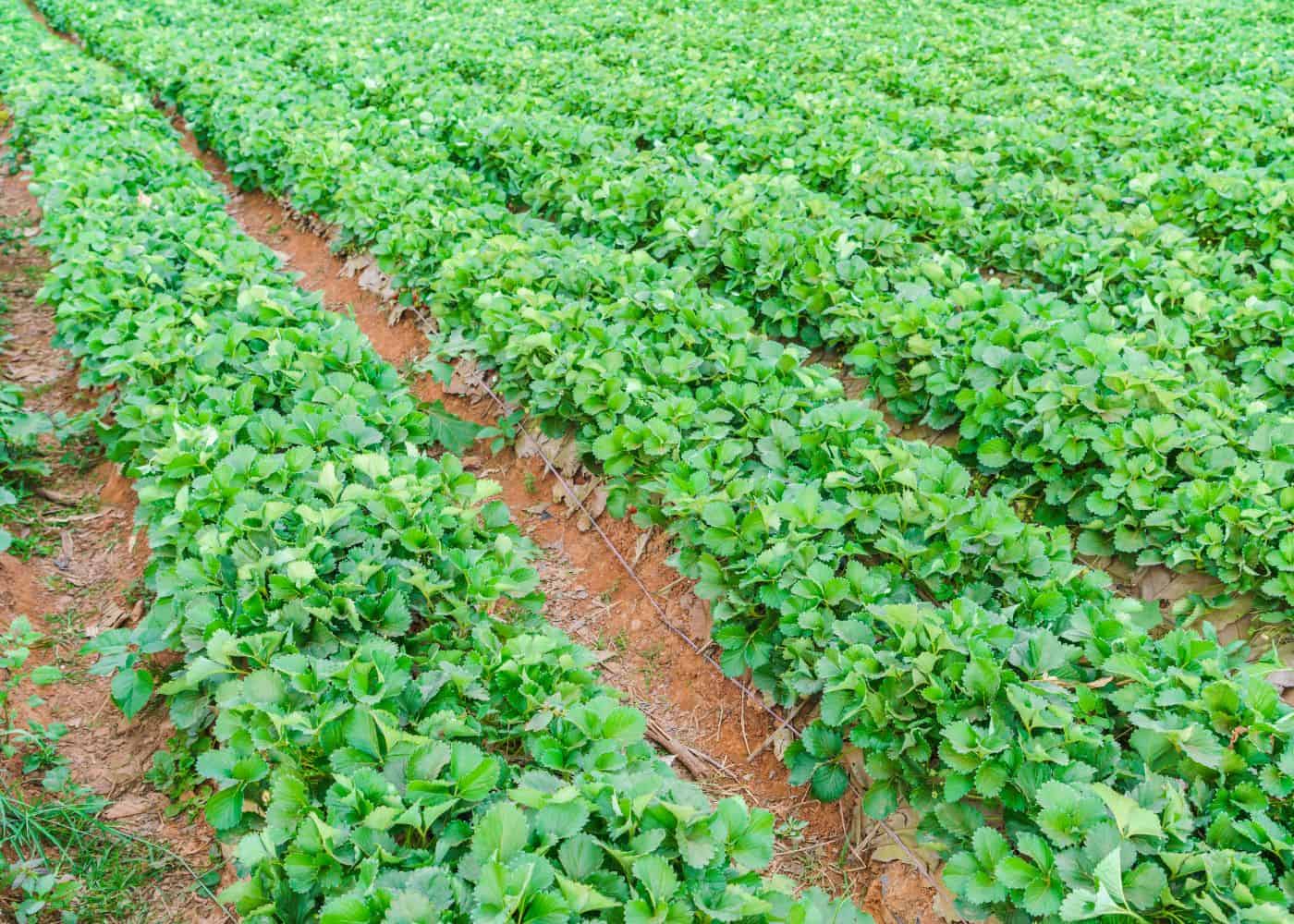
Harvesting time usually comes around late spring or early summer, depending on where you live. When harvesting time arrives, pick ripe fruits gently by hand – avoid pulling off green ones since those won’t ripen after being picked – then store them in an airtight container at room temperature for no more than five days before eating or freezing for later use.
Growing matted row strawberries has many benefits, including increased yields due to higher density planting compared to traditional hill systems, plus less maintenance required overall since fewer individual beds need tending. Not only do these berries taste great, but they also look beautiful when planted en masse, making them a perfect addition to any garden design project, whether it’s residential or commercial property alike.
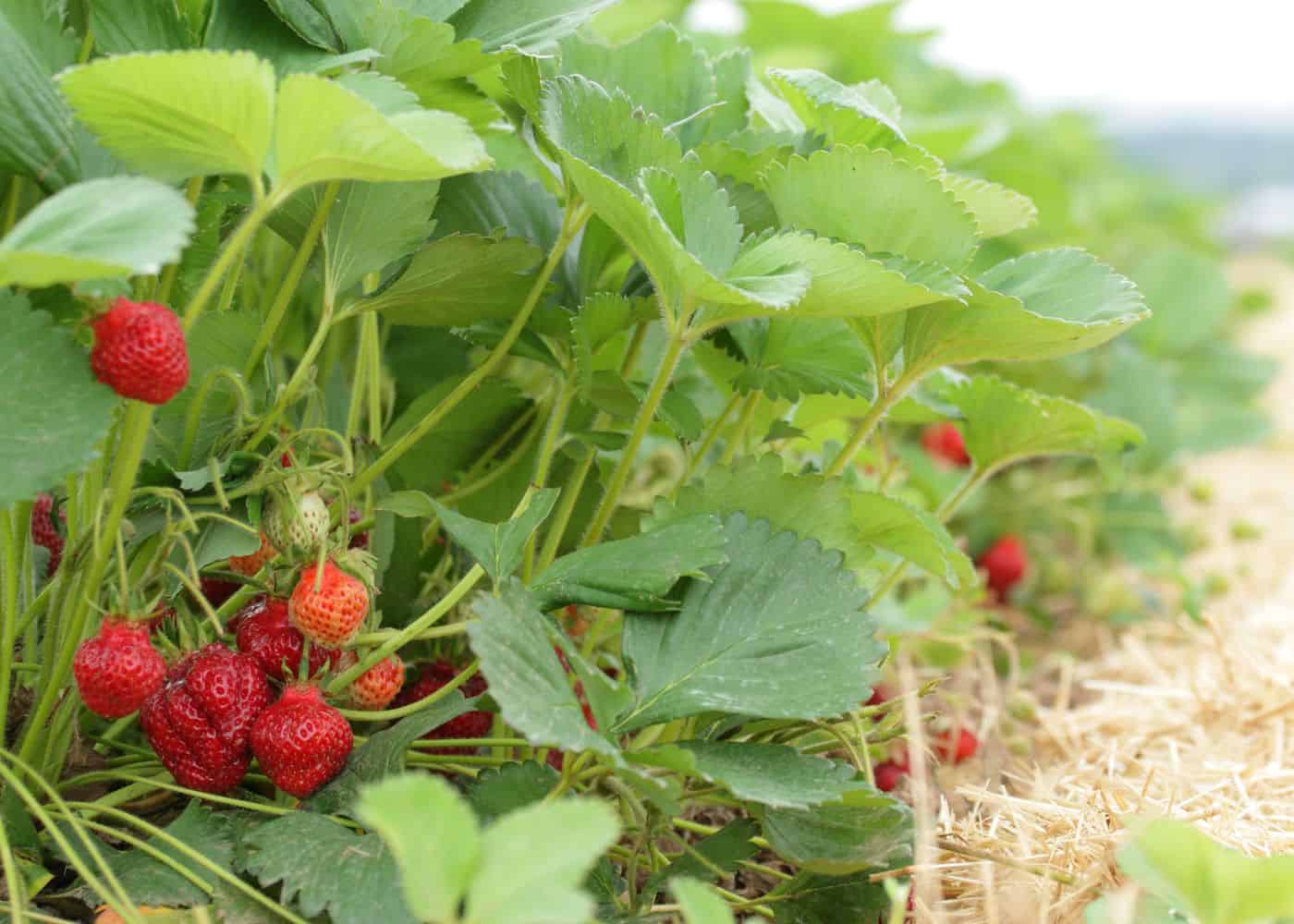
Planting strawberry plants in matted rows
When planting matted row strawberries, the best time to do so is in early spring when the soil has thawed and warmed up. The ideal soil for strawberry plants should be well-draining with a pH of 6.0 to 7.5. Preparing the soil before planting, removing any weeds or debris from the area, and loosening up the top few inches of dirt with a shovel or tiller is important. If your soil is too sandy or clay-like, consider adding organic matter, such as composted manure or peat moss, to help improve its structure and nutrient content.
Once you have prepared your site, you can begin planting your strawberry plants 14 to 24 inches apart within each row and 36 to 48 inches between rows. When setting out your plants, make sure that their roots are spread out evenly in all directions and covered completely by loose soil while leaving only their crowns exposed at ground level.
After they are planted properly, water them thoroughly until moisture reaches 8–10 inches deep into the ground around each plant’s root system – this will help ensure that they become established quickly without suffering from dehydration stress due to lack of moisture during dry spells later on in summertime months after fruiting begins.
Varieties to plant in matted rows
Any June-bearing variety is good for planting in a matted row system. Other types of strawberries (everbearing and day-neutral) typically don’t make too many runners and are instead planted in a hill system configuration.
Here are some June-bearing varieties to plant in matted rows:
- Honeoye
- Flavorfest
- Allstar
- Hood
- Benton
- Earliglow
- Totem
- Cavendish
- Rainer
Properly watering your matted rows of strawberry plants is essential to ensure they thrive and produce the best fruit. Let’s look at how to water these rows correctly.
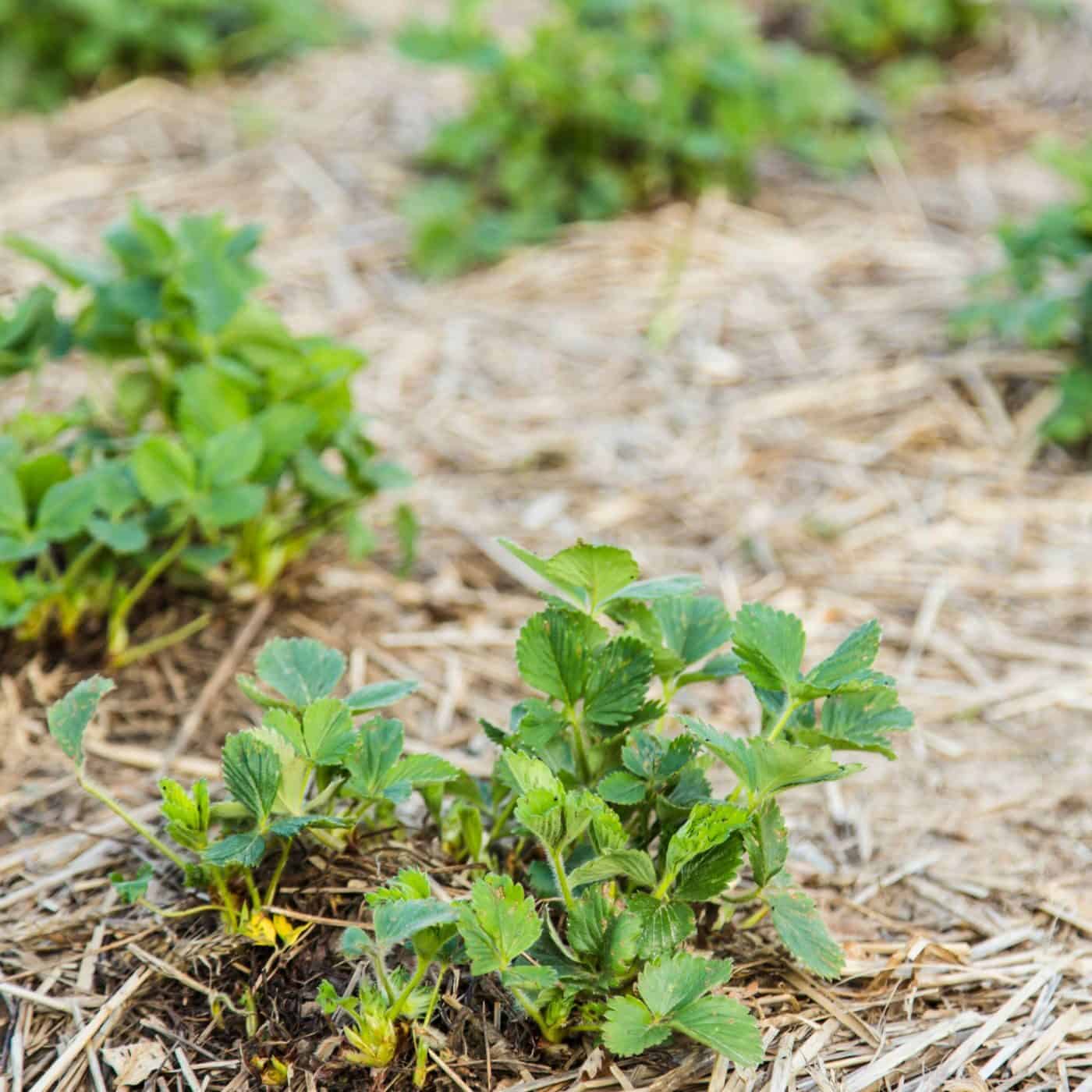
Watering matted rows
Watering matted rows is important to growing healthy and productive strawberry plants. Watering amounts and frequency depend on the soil type, climate, and other factors. Generally speaking, strawberries need 1 to 2 inches of water per week during their active growth period from spring through fall.
During dry periods or in hot climates, supplemental irrigation may be necessary for optimal growth. When irrigating your matted row strawberry bed, ensure you water deeply enough to reach the roots, typically located in the top 18 inches of soil. It’s best to avoid overhead watering during bloom time as this can cause disease issues with the flowers and fruit.
Apply a balanced fertilizer at least once a year before blooming begins in early spring when new leaves start appearing on the plants. This will help promote vigorous growth throughout the season and ensure good fruit size come harvest time. You can also use a liquid fertilizer every few weeks throughout summer if desired, but be careful not to overfertilize as this can lead to poor yields or even plant death due to nutrient burn or toxicity from too much nitrogen in particular.
After harvesting has finished up for the season, it is recommended that you mulch heavily around each plant with straw or another organic material such as pine needles or shredded bark. This will help insulate them against cold temperatures and moisture loss during dormancy until spring arrives.
Watering matted rows is important to keeping your strawberry plants healthy and productive. Now, let’s take a look at how to keep weeds from invading your strawberry patch.

Controlling weeds
Weeds can be a major problem for gardeners, but there are several ways to keep them under control. One of the most effective methods is mulching with the organic matter after planting your strawberry plants in matted rows. This will help prevent weeds from germinating and competing with your strawberries for nutrients and water. As runners form, you can nestle them through the mulch so they make contact with the soil.
Hand pulling or light cultivation is recommended for weeds that appear later in the season – just be careful not to damage roots when cultivating. If you’re using an herbicide, choose one that won’t harm beneficial insects like bees or ladybugs, as well as other nearby plants. Applying pre-emergent herbicides before weed seeds have a chance to sprout may also help reduce future problems.
Mulching helps retain moisture and prevents erosion while adding valuable organic matter back into the soil, benefiting your strawberries and any other plants growing nearby. It also reduces competition from weeds by blocking sunlight needed for their growth and development – this means less time spent weeding. If you use composted materials such as grass clippings or leaves, it will provide additional nutrients to feed your strawberry crop too.
Controlling weeds doesn’t have to be difficult; following these simple steps should help keep them at bay so you can enjoy healthy harvests of delicious strawberries each year without all the hassle. Mulching helps retain moisture and prevents erosion while adding valuable organic matter back into the soil, benefiting your strawberries and any other plants growing nearby. It also reduces competition from weeds by blocking sunlight needed for their growth and development, meaning less time spent weeding. Using composted materials such as grass clippings or leaves will provide additional nutrients to feed your strawberry crop too.
Harvesting from June-bearers
Harvesting matted row strawberries is a rewarding experience for any gardener. The best time to harvest the berries is when they are fully ripe and just beginning to soften. This usually occurs in late spring or early summer, depending on your climate and the variety of strawberries planted. To pick the berries, gently grasp them with your thumb and forefinger and pull off the stem without crushing or damaging the fruit. If you have an abundance of strawberries, using a small basket or container to collect them as you go along may be helpful.
It’s important not to leave overripe strawberries on the plant too long as this can attract pests such as birds, slugs, snails, and other animals that will eat away at your crop before you get a chance to enjoy it. Also, leaving unharvested fruits can lead to disease problems due to fungal spores being spread from one berry to another during wet weather conditions.
Once harvested, store matted row strawberries in shallow containers lined with paper towels so they don’t squish each other while en route home from harvesting. Place them in a single layer inside of these containers if possible so air can circulate around all sides of each berry for optimal freshness preservation until ready for consumption within 1-2 days after picking (or freezing).
For longer storage periods of up to several weeks or months, depending on the preservation method used (freezing/canning/drying), place cleaned berries into freezer bags filled with either sugar syrup solution or water before placing them in the refrigerator’s freezer compartment. Temperatures should remain below 0°F (-18°C) for optimal results; otherwise, mold growth could occur quickly once thawed out again.
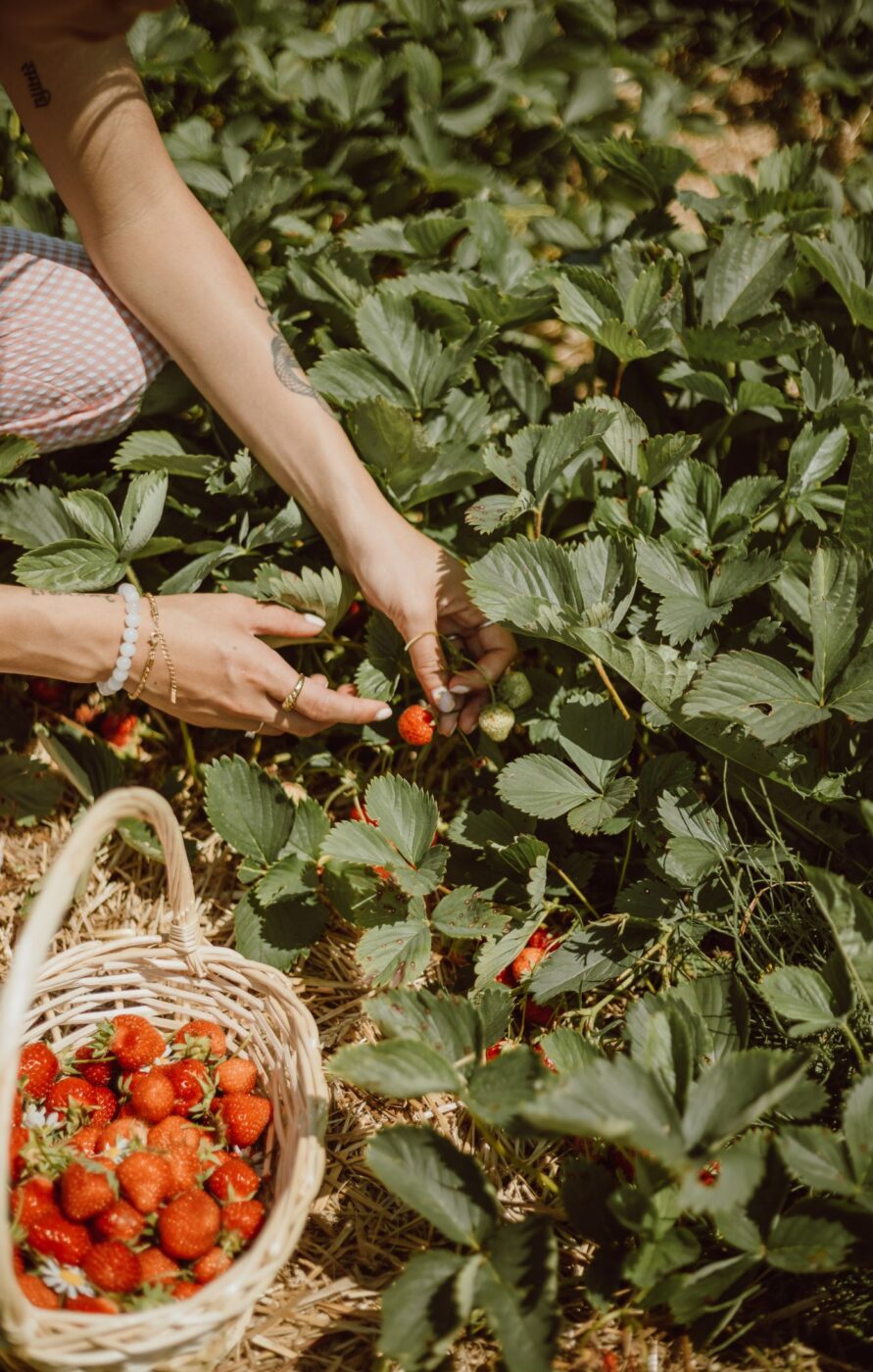
Annual strawberry row rejuvenation
Maintaining your strawberry rows is an important part of growing a successful crop. After the June-bearing plants have finished producing fruit for the season, it’s time to cut or mow all leaves and remove any debris from the bed. This will stimulate vigorous new growth in the plants. Be careful not to damage the crowns of the plants while doing this task.
Dig up and replant rooted runners into bare areas if needed, as well as add fertilizer to established beds to encourage late summer plant growth and flower bud initiation. Fertilizer should be applied at least twice during the season, once in early spring before blooming begins and again after harvest when new foliage appears on existing plants.
Weeds can quickly take over a strawberry row if left unchecked, so it’s important to keep them under control by hand weeding or using mulch around each plant. Mulching also helps retain moisture which is essential for healthy strawberries – water deeply but infrequently throughout their growing season, with 1-2 inches per week being ideal depending on weather conditions.
Pests & diseases affecting row-planted strawberries
Pests and diseases can be major problems when it comes to growing matted row strawberries. Common pests include slugs, aphids, earwigs, caterpillars, and thrips. Slugs feed on the leaves of strawberry plants while aphids suck out their sap. Earwigs are attracted to moist areas around the plant’s crown and will eat both fruit and foliage. Caterpillars also feed on the foliage of strawberry plants, while thrips cause damage by sucking out their juices.
To prevent pest infestations in your matted rows of strawberries, you should keep weeds away from your plants as they provide shelter for these insects. You should also remove any debris or fallen fruit that may attract them to your garden beds. If an infestation does occur, there are several organic methods you can use, such as introducing beneficial insects like ladybugs or using insecticidal soap sprays, which work by suffocating soft-bodied insects like aphids and thrips without harming other beneficial bugs in your garden bed.
To prevent these diseases from occurring, you should rotate crops each year so that the same family is not planted back into the same area every season. Additionally, avoid overhead irrigation if possible since this increases the chances of infection via splashing up onto plant parts during watering. Lastly, ensure all gardening tools are sterilized between uses so pathogens don’t spread among different plants.
Benefits of using the matted row system
Maintaining matted rows is relatively simple compared to other types of strawberry plantings. Since they grow close together in neat rows, weeds are easier to control than with more sprawling varieties. Additionally, you won’t need to worry about staking them since they remain low-growing and don’t require much pruning or training either.
Harvesting from matted rows is also quite easy due to their organized growth pattern; simply walk down each row picking ripe berries as you go. You can also expect a good yield from these plants – up to 4-6 quarts per 10 feet of a row if cared for properly throughout the season.
Finally, growing matted row strawberries has many benefits beyond just taste and ease of maintenance: They help attract beneficial insects like bees which will help pollinate your other crops; plus, their shallow root system helps prevent soil erosion while adding organic matter back into the ground as well.
FAQs about matted row strawberries
What’s a matted row system?
The matted row system is a gardening technique that involves planting strawberry plants in long rows and allowing the runners to fill in the spaces between and around the plats. The matted row system works best for June-bearing strawberries.
How far apart should strawberry matted rows be?
Strawberry matted row spacing depends on the variety of strawberries you are planting. Generally, it is recommended to space plants 12-18 inches apart in rows that are 3-4 feet apart (measuring from the center line of each row).
Make sure to keep the soil consistently moist and provide adequate sunlight for optimal growth and fruit production. Properly spaced plants will help ensure healthy, productive strawberries.
What should you put between rows of strawberries?
When planting strawberries, it is important to consider what should be placed between the rows. There are lots of good options for strawberry mulch to consider.
A good option is straw mulch. This helps to keep weeds down and retain moisture in the soil. Additionally, it can provide some insulation for your plants during cold weather. It also adds organic matter to the soil as it breaks down over time. When using straw mulch, make sure you spread a thick layer of at least 4 inches so that weeds cannot penetrate through easily and water does not evaporate quickly from the surface of the soil.


